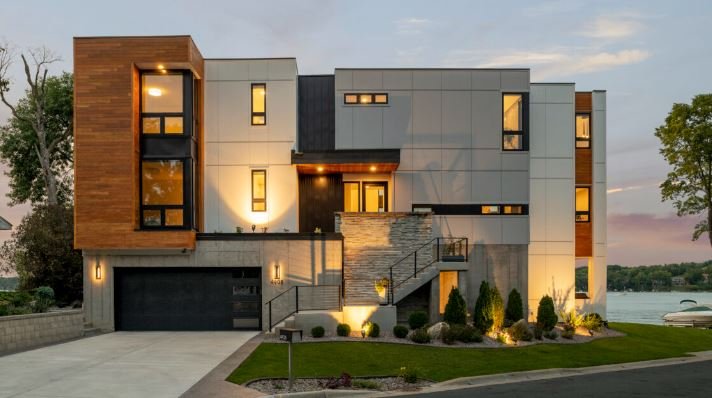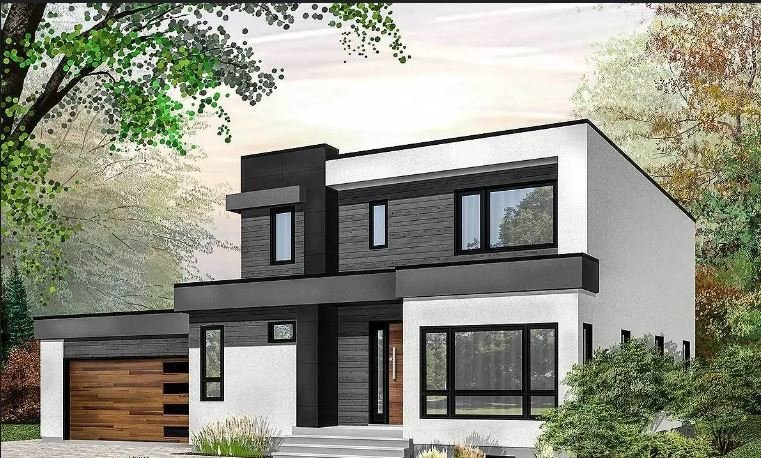Contemporary Residential Architecture Trends
- By -Peter
- Posted on
- Posted in Modern Architecture
Contemporary residential architecture is evolving rapidly, influenced by technological advancements, sustainability concerns, and changing lifestyle preferences. Explore the latest trends shaping modern homes.

Sustainable Design Practices
Sustainability remains a top priority in contemporary residential architecture. Architects are integrating passive design techniques, renewable energy sources like solar panels, and eco-friendly materials to reduce environmental impact.
Open Floor Plans and Flexible Spaces
Open floor plans continue to dominate modern homes, emphasizing fluidity and connectivity between living spaces. Flexible layouts cater to diverse family dynamics and evolving lifestyle needs, promoting versatility and functionality.
Emphasis on Natural Light and Ventilation
Maximizing natural light and ventilation enhances indoor air quality and reduces reliance on artificial lighting and mechanical systems. Large windows, skylights, and clerestory windows are popular choices in contemporary designs.
Integration of Indoor and Outdoor Living Spaces
Seamless transitions between indoor and outdoor spaces blur the boundaries, expanding living areas and fostering a closer connection to nature. Patios, decks, and garden courtyards are integrated into modern home designs.
Smart Home Technology
Advancements in smart home technology are revolutionizing residential architecture. Automated systems control lighting, heating, security, and entertainment, offering convenience, energy efficiency, and enhanced comfort.
Minimalist Aesthetics and Clean Lines
Minimalism continues to influence contemporary residential architecture, characterized by clean lines, uncluttered spaces, and a focus on essential elements. This aesthetic promotes simplicity, tranquility, and visual harmony.
Eco-Friendly and Recycled Materials
Architects are incorporating eco-friendly materials such as reclaimed wood, bamboo, and recycled steel into home construction. These materials not only reduce environmental impact but also add unique textures and character to spaces.
Energy-Efficient Building Techniques
Energy-efficient building techniques like passive solar design, high-performance insulation, and energy-efficient appliances are standard in contemporary residential architecture. These strategies lower utility costs and minimize carbon footprint.
Multi-Generational Living Spaces
With changing demographics, multi-generational living spaces are gaining popularity. Homes are designed to accommodate extended families or aging parents, with separate living areas or adaptable spaces that promote privacy and togetherness.
Wellness-Oriented Design Features
Wellness-oriented design principles focus on creating healthy living environments. Features include biophilic design elements, indoor gardens, air purification systems, and spaces that promote mental and physical well-being.
Modular and Prefabricated Construction
Modular and prefabricated construction techniques streamline the building process, reduce construction time, and minimize waste. These methods offer flexibility in design and customization while maintaining high-quality standards.
Adaptive Reuse and Renovation
Adaptive reuse and renovation of existing structures are sustainable alternatives to new construction. Architects transform old warehouses, barns, and industrial buildings into modern, stylish homes that preserve historical character.
Resilient Design for Climate Adaptation
Resilient design strategies address climate change impacts such as extreme weather events and rising sea levels. Homes are designed with durable materials, elevated foundations, and flood-resistant features to enhance resilience.
Conclusion: Shaping the Future of Home Design
Contemporary residential architecture is defined by innovation, sustainability, and responsiveness to evolving lifestyles. Architects are embracing advanced technologies, sustainable practices, and adaptable design solutions to create homes that meet the needs of today and anticipate the challenges of tomorrow.
By staying informed about emerging trends and integrating best practices in architecture, homeowners can achieve homes that are not only stylish and functional but also environmentally responsible and conducive to well-being. Embrace the possibilities of contemporary residential architecture to create your dream home for the future.



